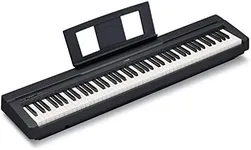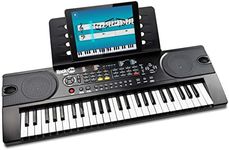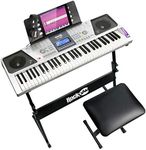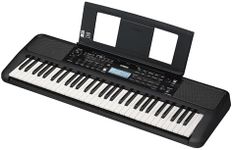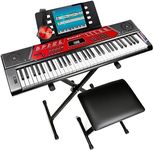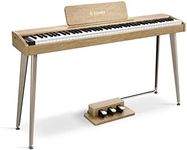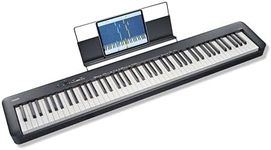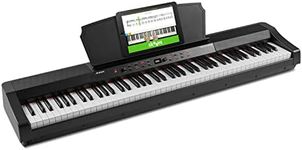Buying Guide for the Best Cheap Piano Keyboards
When choosing a cheap piano keyboard, it's important to focus on the features that will best suit your needs as a player, whether you're a beginner or looking for a portable option. While budget is a consideration, the key is to find a balance between cost and the features that will enhance your playing experience. Consider what you need in terms of sound quality, portability, and additional features that can aid in learning or performance. Understanding the key specifications will help you make an informed decision.Number of KeysThe number of keys on a keyboard is crucial because it determines the range of notes you can play. A full-sized piano has 88 keys, but keyboards can have fewer, such as 61 or 76 keys. For beginners or those with limited space, a 61-key keyboard might be sufficient, allowing you to play most music comfortably. If you plan to play more complex pieces or transition to a traditional piano later, consider a 76 or 88-key keyboard. Your choice should reflect your current skill level and future aspirations.
Touch SensitivityTouch sensitivity refers to how the keyboard responds to the pressure of your fingers. A touch-sensitive keyboard will produce louder sounds when you press the keys harder and softer sounds with a lighter touch, mimicking an acoustic piano. This feature is important for developing proper technique and expression. If you're a beginner, a touch-sensitive keyboard can help you learn dynamics and control. If you're more advanced, it's essential for expressive playing. Look for keyboards that offer adjustable sensitivity settings to match your playing style.
Sound QualitySound quality is determined by the samples used in the keyboard and the quality of the speakers. Higher quality samples and better speakers will produce a more realistic and pleasing sound. For beginners, a basic sound quality might suffice, but as you progress, you'll likely want a keyboard that offers richer and more nuanced tones. Consider trying out different models to see which sound you prefer, and think about whether you'll be using headphones or external speakers, as this can also affect your experience.
PolyphonyPolyphony refers to the number of notes a keyboard can produce at once. A higher polyphony count allows for more complex music and the use of sustain pedals without notes cutting off. For beginners, 32-note polyphony might be enough, but as you advance, you might require 64-note or even 128-note polyphony to ensure all notes are heard clearly, especially when playing layered sounds or using accompaniment features. Consider your current playing style and future needs when choosing the polyphony level.
PortabilityPortability is an important factor if you plan to move your keyboard frequently or have limited space. Lighter and more compact keyboards are easier to transport and store. If you need a keyboard for home use only, portability might be less of a concern, but if you plan to take it to lessons or gigs, look for a model that balances size and weight with the features you need. Consider whether the keyboard comes with a carrying case or if one is available separately.
Additional FeaturesAdditional features such as built-in learning tools, recording capabilities, and connectivity options can enhance your playing experience. Learning tools like light-up keys or lesson modes can be beneficial for beginners. Recording features allow you to track your progress and creativity. Connectivity options, such as USB or MIDI, enable you to connect to computers or other devices for expanded functionality. Consider which features align with your learning goals and how you plan to use the keyboard in different settings.

